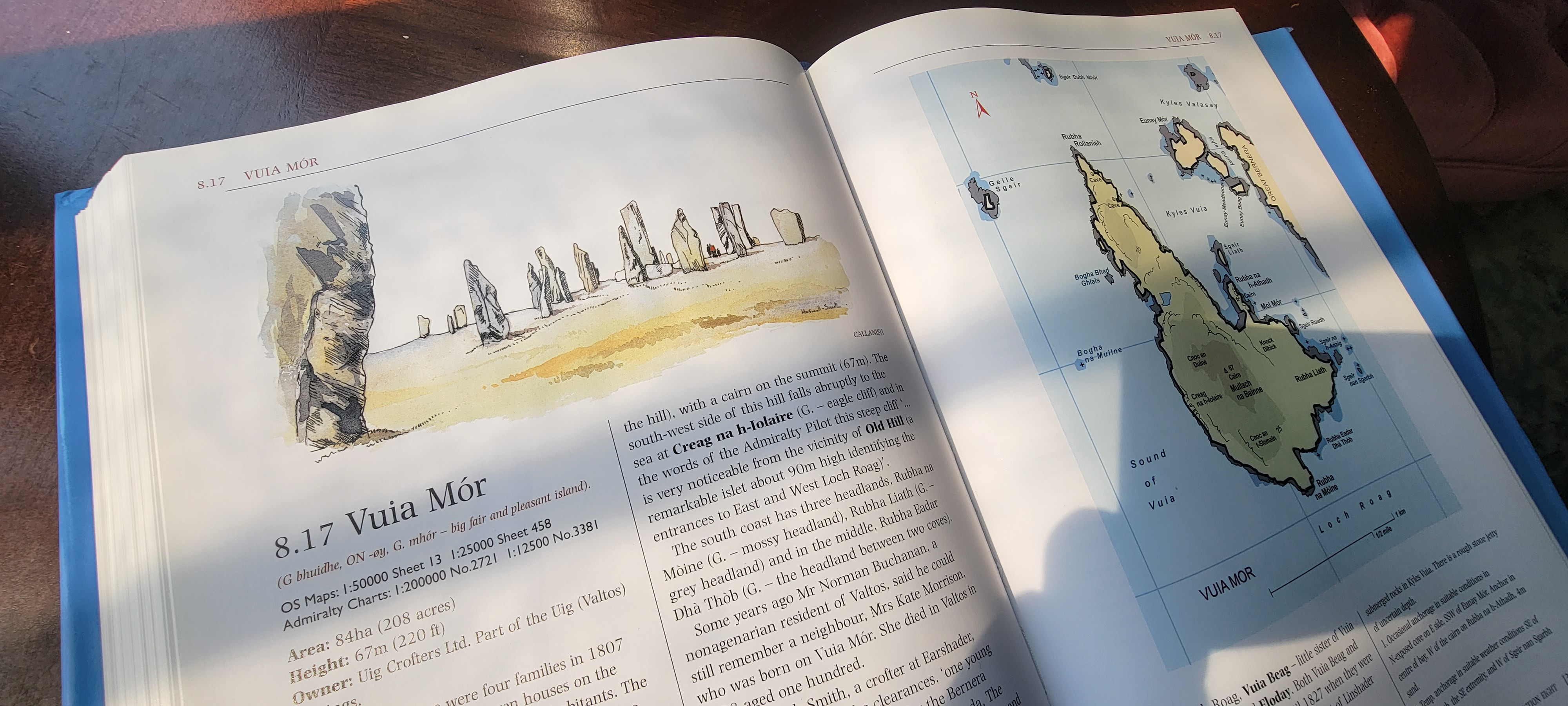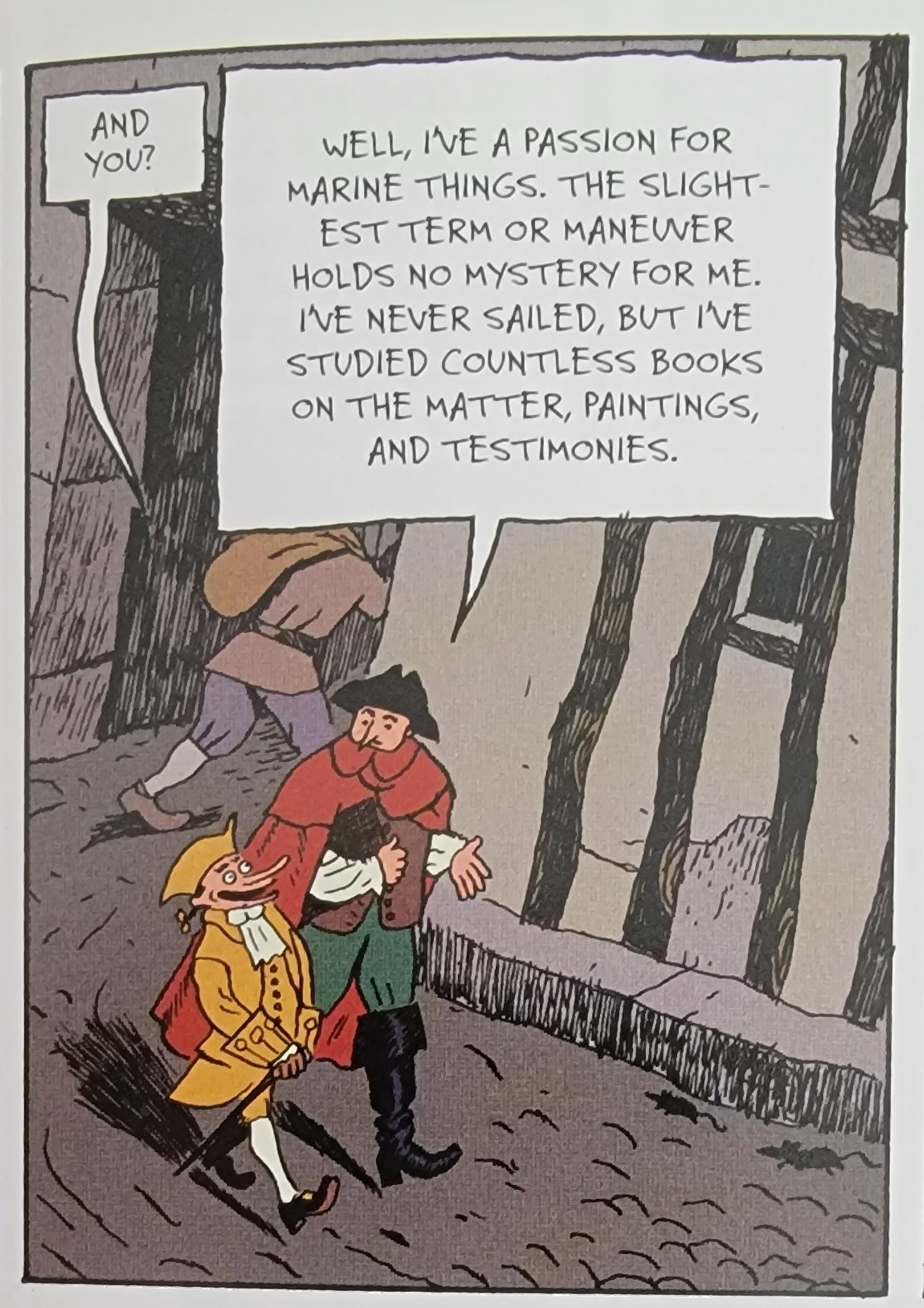reading the waves
I’ve made plans to get out on the water again in July 2024, but what to do with my enthusiasm/nervous energy in the meantime?
Nautical fiction and non-fiction aren’t substitutes for time at sea but reading about sailing instills good instincts and helps me remember terminology. Right? Well whatever, it’s fun, and it’s the most I can do right now as I pave the way from passion to action.
Here’s my current library of sailing-related reading:
Non-Fiction
- The Scottish Islands, Hamish Haswell-Smith
This was the bible on the Blue Clipper as it sailed me around the Hebrides last year, and it is a delight. Not just for data about depths and docks and treacherous rocks, it provides full local history of each area paired with very lovely sketches and watercolor illustrations by the author himself. Descriptions of locations include who owns the land, where boats can anchor, and warnings about wind and hazards. While it doesn’t teach how to sail, it might teach a sailor’s perspective.

-
Last Time Around Cape Horn, William Stark (with his son, Peter Stark) This relates the story of a crewman aboard The Pamir during the last Grain Race voyage in 1949. This was perhaps the first non-fiction sailing adventure story I read and it carried me away (so to speak). Particularly impactful was that the story took place both in what I thought of as past times (global trade by sail in harrowing passages that resulted in loss of life) and modern times (my own mother was born the very year this voyage took place). The engaging adventure and the new realization that tall ships were not as deep in the past as I thought contributed to my burgeoning intent to have tall ship experience of my own.
-
Sailing Alone around the World, Joshua Slocum
This is a classic work of non-fiction written by the first man to do what it says on the tin in 1895. The audiobook narrator has a convincingly wizened voice; combine that with the author’s openness about his emotions during the voyage, and it makes for a moving read full of experiences that we will never have in today’s world. -
How to Sail a Boat, Matt Vance
More recent than the other books, this one is also less serious. It’s more about the character of people that are drawn to sailing, and loving portrayal of the culture they create among the marinas and docks and seasides of the world. A fun and easy read. I happened upon it on by accident but very much enjoyed it. -
The Last Grain Race, Eric Newby
The real last grain race was recounted in Last Time Around Cape Horn, but this book by a crewman on the Moshulu in 1938/39 is much more well known. I have not read this one yet but bought it on the strength of word-of-mouth recommendations. -
Seamanship in the Age of Sail, John Harland
This tome is highly regarded as the best extant detailed description of how ships of this era were actually sailed, particularly in a military context. I’ve ordered the hard copy and can’t wait to dig in. -
Jack Tar: The Extraordinary Lives of Ordinary Seamen in Nelson’s Navy, Roy and Lesley Adkins
This one is still on its way to me as well. I wanted to hear about shipboard life from people who actually lived it, and this appears to fit the bill.
Fiction
- Aubrey & Maturin series, Patrick O’Brien
This is the most recommended nautical fiction in English literature, probably because it includes characters that feel real and they, in turn, make shipboard life feel real. I’ve read Master and Commander a couple times, and am now continuing on to Post Captain. Many more books still to be enjoyed for the first time!
This list puts me in mind of a scene from Christopher Blain’s graphic novel, Isaac the Pirate…
